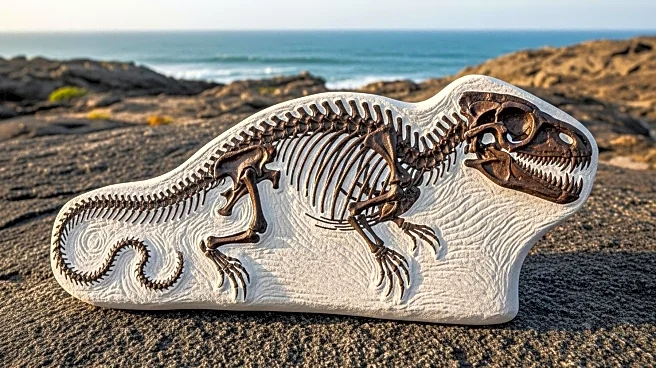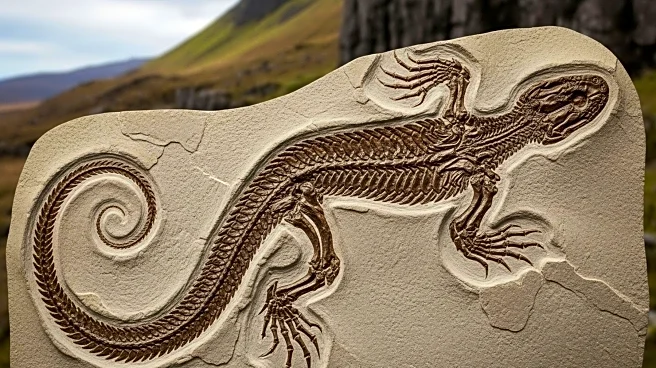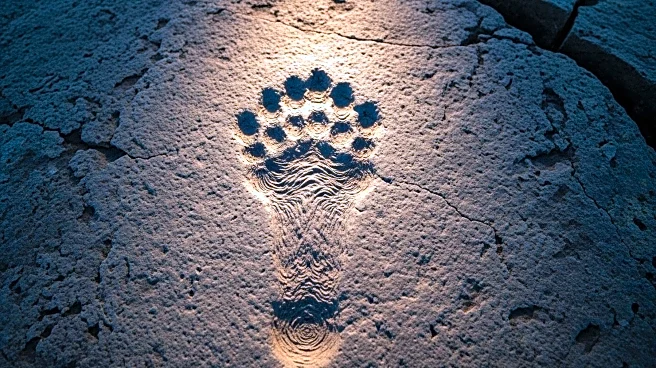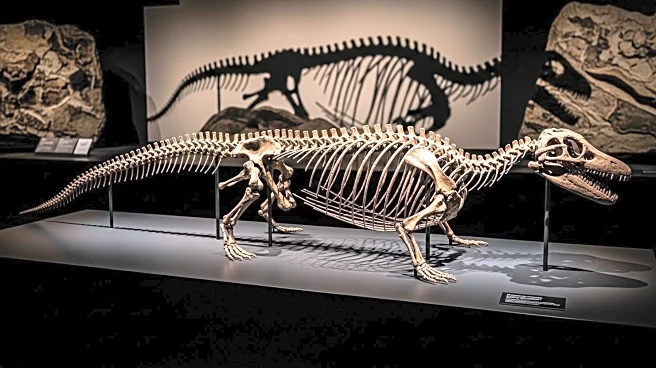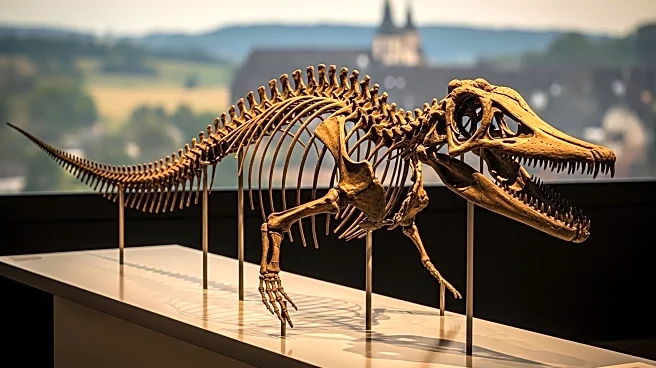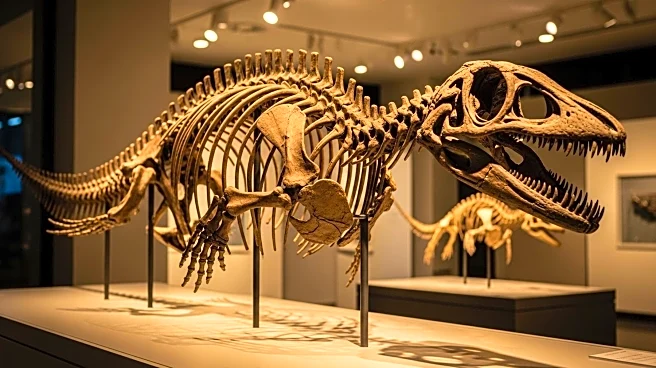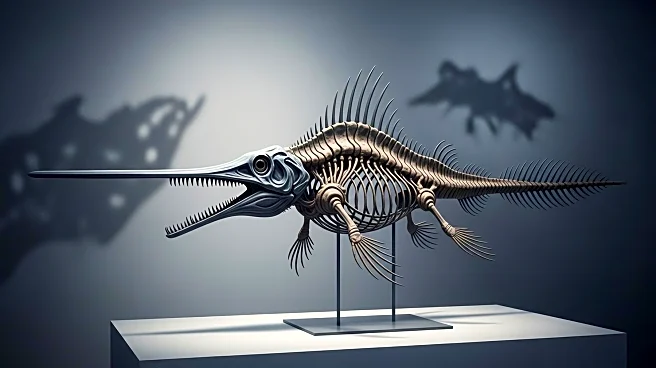What is the story about?
What's Happening?
A fossilized skeleton of a Jurassic reptile, Breugnathair elgolensis, has been discovered on Scotland's Isle of Skye. The creature, known as the 'false snake of Elgol,' exhibits features of both lizards and snakes, with a snake-like jaw and curved teeth similar to a modern python, but a short body with fully formed limbs like a lizard. The discovery, published in Nature, suggests that B. elgolensis was one of the largest lizards in its ecosystem, hunting smaller lizards, early mammals, and young dinosaurs. The fossil provides new insights into early snake evolution and the diversity of Squamata.
Why It's Important?
The discovery of B. elgolensis offers valuable insights into the evolutionary history of lizards and snakes, challenging existing assumptions about their development. By revealing a species with both lizard and snake-like features, the fossil provides evidence of the complex evolutionary paths within Squamata. This research enhances our understanding of the diversity of reptiles during the Jurassic period and contributes to the broader narrative of vertebrate evolution.
What's Next?
Researchers will continue to study the fossil to unravel its evolutionary history and determine its place within Squamata. Further analysis may reveal whether snakes evolved from species like B. elgolensis or independently developed similar features. The discovery could lead to a reevaluation of early reptile evolution and the relationships between lizards and snakes.
Beyond the Headlines
The study highlights the unpredictable nature of evolutionary paths and the importance of fossil evidence in understanding the history of life. It underscores the need for interdisciplinary approaches, combining paleontology, morphology, and evolutionary biology to explore ancient species.
AI Generated Content
Do you find this article useful?
